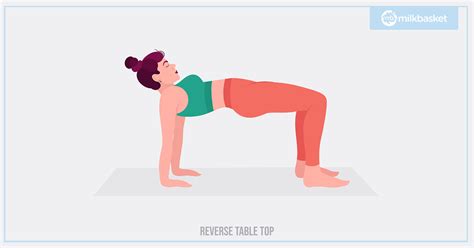Beyond lifts: How to integrate mobility for peak performance & longevity?

The Missing Link in Your Fitness Journey
For many fitness enthusiasts, the journey to peak performance often revolves around heavier lifts, faster sprints, and more intense workouts. While strength and cardiovascular fitness are undoubtedly crucial, a vital component often gets overlooked: mobility. True peak performance and sustainable longevity in your fitness pursuits aren’t just about how much you can lift or how fast you can run, but how well your body can move through its full range of motion without restriction or pain.
Ignoring mobility is like building a skyscraper on a shaky foundation. You might achieve impressive heights, but the structure is inherently vulnerable. Integrating mobility into your routine isn’t just an add-on; it’s a fundamental shift that empowers your body to perform better, recover faster, and stay active for decades to come.

Understanding Mobility: More Than Just Flexibility
Before diving into integration strategies, it’s important to clarify what mobility truly means. Mobility is not just flexibility. Flexibility refers to the passive range of motion around a joint, essentially how far you can stretch a muscle. Mobility, on the other hand, is the active control over that range of motion. It’s the ability of your joints to move freely and the surrounding muscles to contract and relax effectively, allowing you to execute movements with power, control, and precision.
Think of it this way: you might be flexible enough to touch your toes, but do you have the mobility to perform a deep, controlled squat with perfect form? Mobility training targets the joint capsules, ligaments, tendons, and muscles, improving both the structural integrity and the functional capacity of your body.
Key Benefits of Prioritizing Mobility
Enhanced Performance
Improved mobility translates directly to better performance in any physical activity. For lifters, this means deeper squats, a stronger lockout in bench presses, and more efficient deadlifts. Athletes will experience increased power, agility, and a greater capacity for explosive movements. When your joints move optimally, your muscles can fire more effectively, leading to greater strength and efficiency.
Injury Prevention
Perhaps the most compelling argument for mobility work is its role in injury prevention. Stiff, restricted joints and tight muscles are prime candidates for strains, sprains, and chronic pain. By improving your range of motion and joint stability, mobility training helps distribute stress evenly across your body, reducing the likelihood of compensatory movements that often lead to injury. It builds resilience, making your body more robust and less susceptible to the wear and tear of intense training or daily life.
Improved Recovery & Longevity
Mobility work can significantly aid in recovery by promoting blood flow to tissues, reducing muscle soreness, and improving overall joint health. Over the long term, a mobile body is a resilient body. Maintaining good mobility helps counter the effects of aging, keeping you active, independent, and capable of enjoying a full range of physical activities well into your later years. It’s an investment in your future physical freedom.

Practical Strategies for Integrating Mobility
Integrating mobility doesn’t require hours of dedicated stretching. Small, consistent efforts can yield significant results.
Dynamic Warm-ups
Before any workout, swap static stretching for dynamic mobility drills. These movements prepare your joints and muscles for activity by taking them through their full range of motion. Examples include leg swings, arm circles, torso twists, cat-cow, and walking lunges with a twist.
Active Cool-downs
After your workout, incorporate active recovery and gentle mobility. This can include light foam rolling, PNF (Proprioceptive Neuromuscular Facilitation) stretches, or specific joint mobilization exercises to improve flexibility and aid recovery.
Dedicated Mobility Sessions
Aim for 10-15 minute dedicated mobility sessions 2-3 times a week, or even daily for specific areas. These sessions can focus on target areas where you feel tight or restricted. Morning routines, pre-bed stretches, or even mini-breaks during your workday can be excellent opportunities.

Essential Mobility Drills to Get Started
- Cat-Cow: Improves spinal mobility and flexibility.
- Thoracic Rotations: Enhances upper back and shoulder mobility, crucial for overhead movements.
- Hip 90/90: Targets internal and external hip rotation, vital for squatting and general hip health.
- World’s Greatest Stretch: A comprehensive movement that opens up the hips, hamstrings, and thoracic spine.
- Ankle CARs (Controlled Articular Rotations): Improves ankle range of motion, impacting squat depth and lower limb stability.
- Shoulder Pass-Throughs: Using a stick or band, this drill enhances shoulder flexion and external rotation.
Remember to move slowly and with control during these drills, focusing on the quality of movement over how far you can push. Listen to your body and never force a stretch.

Consistency is Key for Lasting Results
Like any aspect of fitness, consistency is paramount for mobility gains. A few minutes every day or every other day will be far more effective than an hour-long session once a month. Make mobility a non-negotiable part of your routine, just like brushing your teeth. Over time, you’ll notice significant improvements in how you move, how you feel, and how your body performs, both in the gym and in daily life.

Unlock Your Full Potential
Moving beyond lifts means embracing a holistic approach to fitness that values movement quality as much as strength and endurance. By proactively integrating mobility into your training, you’re not just enhancing your immediate performance; you’re investing in a future of robust health, injury resilience, and the freedom to move powerfully and pain-free for a lifetime. Start today, and unlock the full potential of your body.








